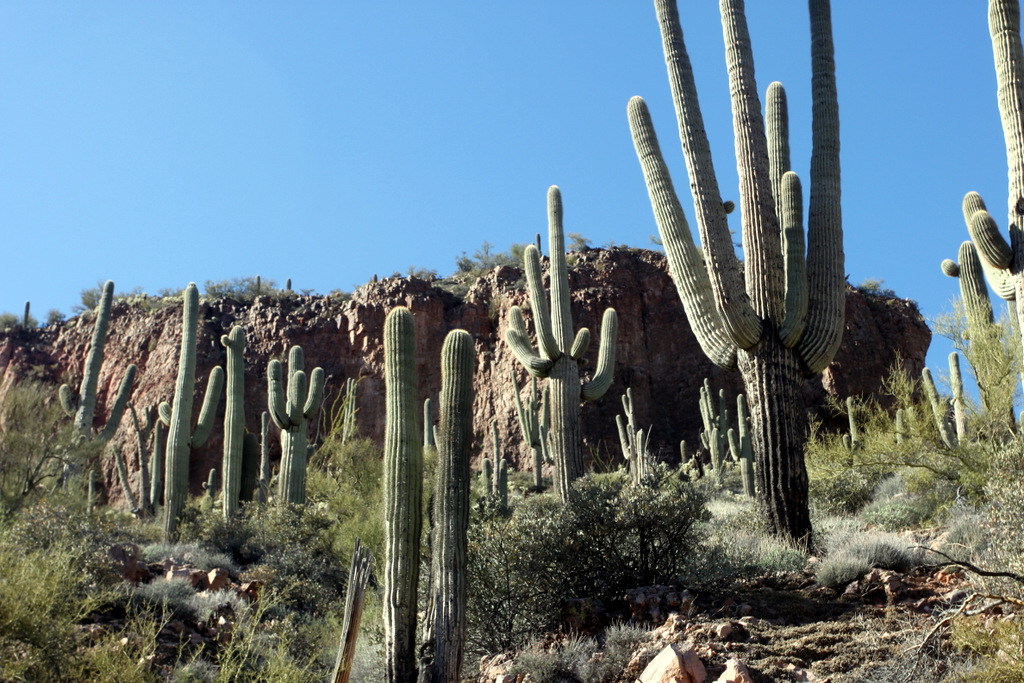If you’ve ever gazed upon the arid landscapes of Arizona, you may have found yourself captivated by the numerous cacti that thrive in this sun-drenched environment. But have you ever wondered just how many different types of cacti there are in Arizona? This vast state is home to an astonishing diversity of cactus species, each showcasing unique adaptations to their rugged surroundings. While exploring these remarkable plants, one might ponder: can one truly appreciate the resilience and beauty of cacti without getting pricked by their spines? This article will delve into the enchanting realm of cacti in Arizona, highlighting several prominent species and their distinctive characteristics.
Before embarking on this exploration, it is noteworthy to mention the ecological significance of cacti. They play a vital role in their ecosystems, providing food and shelter for various wildlife species. Let’s uncover the cacti that populate Arizona’s breathtaking landscapes.
Understanding the Unique Characteristics of Arizona’s Cacti
Cacti are defined by their unique morphological traits—such as thick, fleshy stems and spines instead of leaves—which enable them to thrive in arid environments. Arizona’s climate presents a formidable challenge for many plants, yet cacti have adapted in fascinating ways. While most people may think of tall, towering forms, the state boasts innumerable species, from diminutive ground-huggers to towering giants.
The iconic Saguaro Cactus: A Symbol of the Southwest
Arguably the most recognizable cactus in Arizona is the Saguaro (Carnegiea gigantea). This colossal succulent can soar to heights of up to 40 feet and live for over 150 years. With its distinguishing arm-like structures, the Saguaro is not just an emblem of the Sonoran Desert; it serves as a critical habitat for a myriad of desert-dwelling creatures, including birds and small mammals. During the spring, Saguaros bloom with stunning white flowers, which open during the night and close by noon, a captivating sight for those traversing the desert landscape.
Nevertheless, as magnificent as they are, Saguaros face numerous challenges. With climate change and urban development encroaching on their natural habitats, conservation efforts are more important than ever. Protecting these iconic giants ensures that future generations can admire their grandeur.
Shadows of the Tall: The Organ Pipe Cactus
Found primarily in the southern region of Arizona and named for its unique, organ-like structure, the Organ Pipe Cactus (Stenocereus thurberi) presents a strikingly different appearance from its Saguaro cousins. This cactus typically grows in clumps, with multiple arms that rise and fall gracefully, mimicking the pipes of an organ. The Organ Pipe thrives at lower elevations where temperatures soar, and its blooms, which can be seen in late spring, are a vivid display of bright white and pink flowers.
This species is particularly well-adapted to its environment, but like the Saguaro, it is also susceptible to changing climate conditions and habitat loss. The Organ Pipe Cactus National Monument is dedicated to their protection and preservation, allowing visitors the chance to witness this unique species up close.
Ground Dwellers: The Cholla Cactus
Cholla cacti find their niche in Arizona’s rich biodiversity. With several species, such as the Teddy Bear Cholla (Cylindropuntia bigelovii) and the Chain Fruit Cholla (Cylindropuntia fulgida), these cacti are known for their distinctive cylindrical stems and spiny appearance. The namesake “Teddy Bear” Cholla is especially notorious for its nearly deceptive allure: while it appears soft and huggable, its spines can easily detach, becoming ensnared in the skin at a mere brush.
One can often encounter cholla cacti lining the pathways and trails of the Sonoran Desert. Their spines serve as a defense mechanism against herbivores, while the fleshy pads retain water to combat drought. When in bloom, Chollas produce delicate flowers in vibrant hues, creating an enchanting visual contrast against the arid backdrop.
Beauties with a Twist: The Barrel Cactus
The Barrel Cactus (Ferocactus) stands out not only for its eye-catching round shape but also for its fierce survival prowess. Found predominantly in the Sonoran Desert, this resilient species can store large quantities of water and is known for its thick, spiny exterior. The Golden Barrel Cactus (Echinocactus grusonii) is especially coveted for its striking appearance and can live for several decades, making it a popular choice among gardeners and cactus aficionados.
The blooms of barrel cacti are equally noteworthy. During springtime, vibrant flowers emerge from the top, drawing in pollinators such as bees and hummingbirds. The interplay between beauty and survival in barrel cacti serves as an excellent reminder of nature’s ingenuity.
Conclusion: The Resilience of Arizona’s Cacti
The array of cacti found throughout Arizona illustrates the remarkable adaptations these plants have developed in response to their environment. From the towering Saguaros to the playful Chollas and robust Barrel Cacti, each species offers a glimpse into the complex relationships that exist in the desert ecosystem. While these plants pose an enchanting visual feast, they also present challenges in terms of conservation and ecological balance.
As you wander through Arizona’s captivating desert landscapes, take a moment to appreciate not only the beauty of its cacti but also the resilience they embody. After all, can a landscape truly capture the essence of endurance and adaptability better than the vibrant cacti standing tall amidst the harsh realities of desert life? Understanding these remarkable plants can foster a deeper connection to the natural world, encouraging respectful stewardship of their habitats for years to come.





Leave a Comment